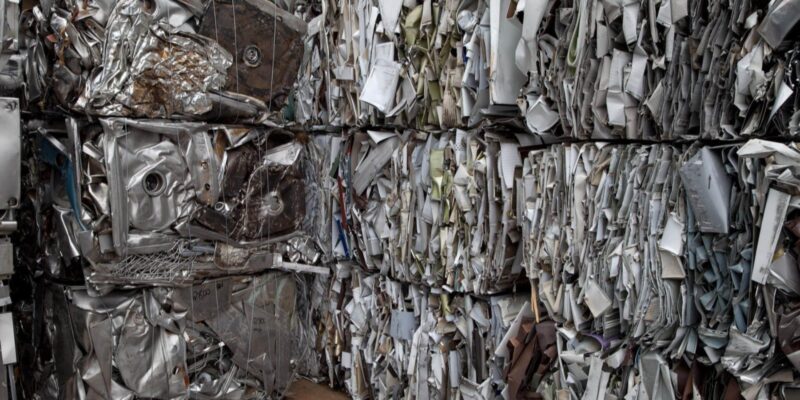The recycling of stainless steel scrap is a crucial part of the global metals industry, promoting sustainability and reducing environmental impact. Among various grades, 316 scrap is particularly valuable due to its superior corrosion resistance and versatility. Stainless steel scrap is not just waste; it’s a resource that can be repurposed into high-quality products for numerous applications.
In this blog, we will explore the types of stainless steel scrap, with a special focus on 316 scrap, and delve into its various uses across industries.
What is Stainless Steel Scrap?
Stainless steel scrap refers to discarded or leftover stainless steel materials from manufacturing, construction, or end-of-life products. It is categorized by grade and composition, making it suitable for different recycling and reprocessing purposes.
316 scrap, a type of austenitic stainless steel, contains molybdenum, which enhances its corrosion resistance, particularly in chloride-rich environments. This property makes it a highly sought-after material for recycling.
Types of Stainless Steel Scrap
1. Austenitic Stainless Steel Scrap
-
Grades: 304, 316, and 310.
-
Characteristics: Non-magnetic, excellent corrosion resistance, and high durability.
-
Applications: Used in marine, chemical, and food processing industries.
316 scrap is a prime example of austenitic stainless steel scrap, valued for its resistance to pitting and crevice corrosion.
2. Ferritic Stainless Steel Scrap
-
Grades: 409 and 430.
-
Characteristics: Magnetic, moderate corrosion resistance, and low nickel content.
-
Applications: Commonly used in automotive exhaust systems and appliances.
3. Martensitic Stainless Steel Scrap
-
Grades: 410 and 420.
-
Characteristics: Magnetic, high hardness, and moderate corrosion resistance.
-
Applications: Ideal for cutlery, surgical instruments, and tools.
4. Duplex Stainless Steel Scrap
-
Grades: 2205 and 2507.
-
Characteristics: Combination of austenitic and ferritic properties, excellent strength, and corrosion resistance.
-
Applications: Used in oil and gas, chemical processing, and marine industries.
5. Precipitation-Hardening Stainless Steel Scrap
-
Grades: 17-4 PH and 15-5 PH.
-
Characteristics: High strength and corrosion resistance.
-
Applications: Found in aerospace, military, and medical applications.
Benefits of Recycling 316 Scrap
-
Environmental Sustainability
Recycling 316 scrap reduces the need for mining raw materials, conserving natural resources and lowering carbon emissions. -
Cost-Effectiveness
Recycling scrap is more economical than producing stainless steel from scratch. Manufacturers save on energy and material costs. -
Resource Optimization
316 scrap, with its high corrosion resistance and strength, is reused to create premium-grade products, ensuring optimal resource utilization.
Uses of Stainless Steel Scrap
1. Manufacturing New Stainless Steel Products
Recycled stainless steel scrap, especially 316 scrap, is melted down and reprocessed to create new stainless steel products. These include:
-
Pipes and fittings.
-
Sheets and plates for industrial applications.
-
Components for the construction and marine industries.
2. Automotive Industry
Stainless steel scrap is used to produce components such as:
-
Exhaust systems.
-
Fuel tanks.
-
Structural reinforcements.
The corrosion-resistant properties of 316 scrap make it particularly valuable for automotive parts exposed to harsh environments.
3. Construction and Infrastructure
Recycled stainless steel is utilized in:
-
Building facades and roofing.
-
Reinforcements for bridges and structures.
-
Water and sewage systems.
316 scrap’s durability and resistance to corrosion make it ideal for construction in coastal or industrial areas.
4. Marine Applications
316 scrap is repurposed to create components for boats, ships, and offshore platforms due to its excellent resistance to saltwater corrosion.
5. Food and Beverage Industry
Recycled stainless steel is used to manufacture:
-
Storage tanks.
-
Kitchen equipment.
-
Food processing machinery.
316 scrap is particularly valuable for food-grade applications because it is non-reactive and easy to clean.
6. Medical and Pharmaceutical Equipment
Recycled 316 stainless steel is used to produce surgical instruments, medical devices, and pharmaceutical equipment due to its biocompatibility and resistance to corrosion.
Challenges in Recycling Stainless Steel Scrap
1. Sorting and Identification
Properly identifying and sorting grades like 316 scrap is crucial for maintaining quality in recycled products. Advanced techniques like X-ray fluorescence (XRF) are often required.
2. Contamination
Scrap materials may contain contaminants that need to be removed before recycling. This step is essential to ensure the purity of the final product.
3. Market Fluctuations
The value of stainless steel scrap can vary based on market demand and the availability of raw materials, affecting recycling profitability.
The Future of Stainless Steel Scrap Recycling
The demand for recycled stainless steel, including 316 scrap, is expected to grow as industries increasingly focus on sustainability and resource conservation. Innovations in sorting technologies and efficient recycling processes will further enhance the usability of stainless steel scrap in high-performance applications.
Conclusion
316 scrap is a valuable resource that plays a significant role in sustainable manufacturing and industrial applications. Its superior corrosion resistance, strength, and versatility make it ideal for reuse in various sectors, including construction, marine, and medical industries.
By understanding the types and uses of stainless steel scrap, we can appreciate its importance in promoting a circular economy and reducing environmental impact. Choosing recycled materials like 316 scrap not only supports sustainability but also ensures the production of high-quality, durable products for the future.
